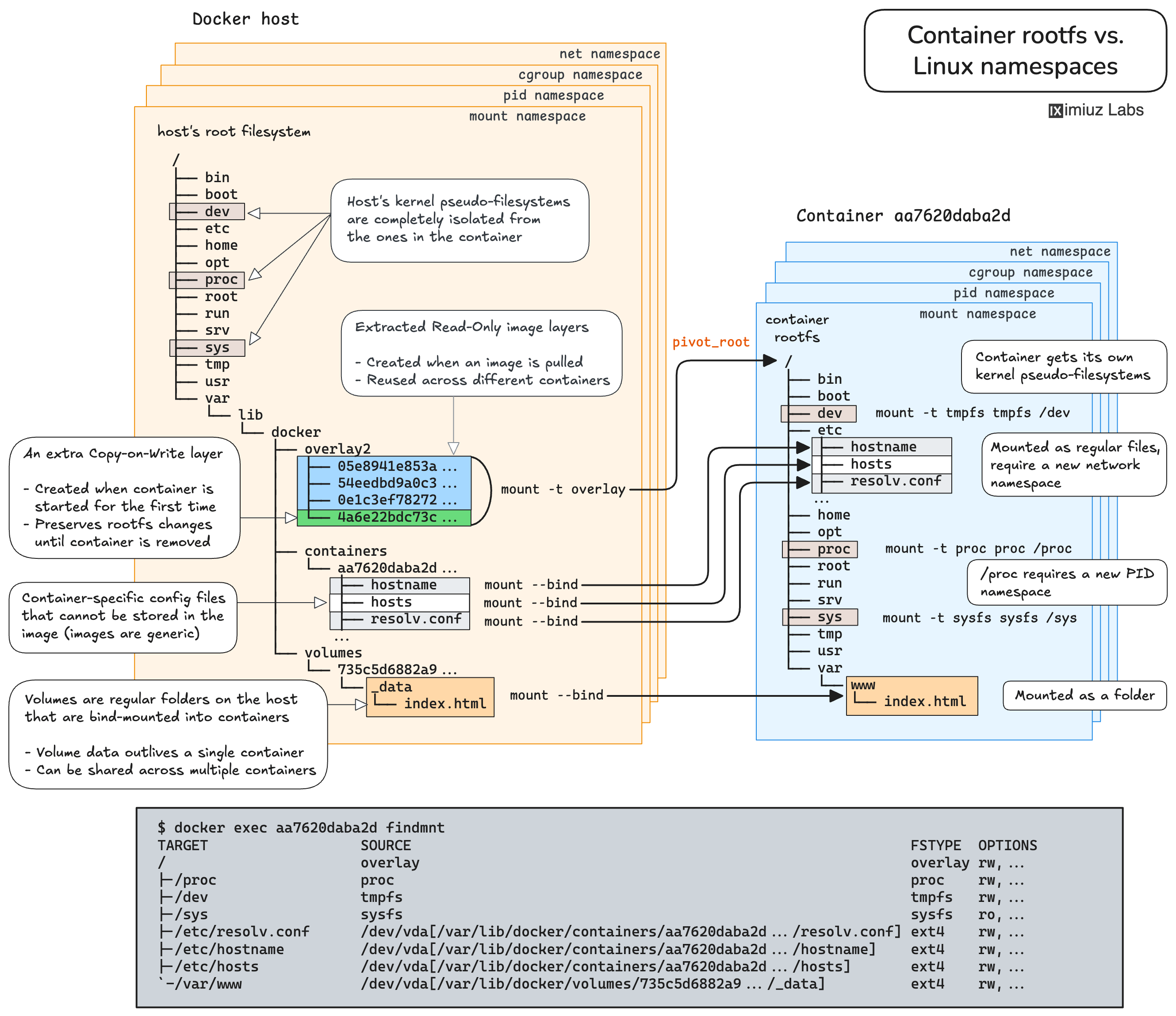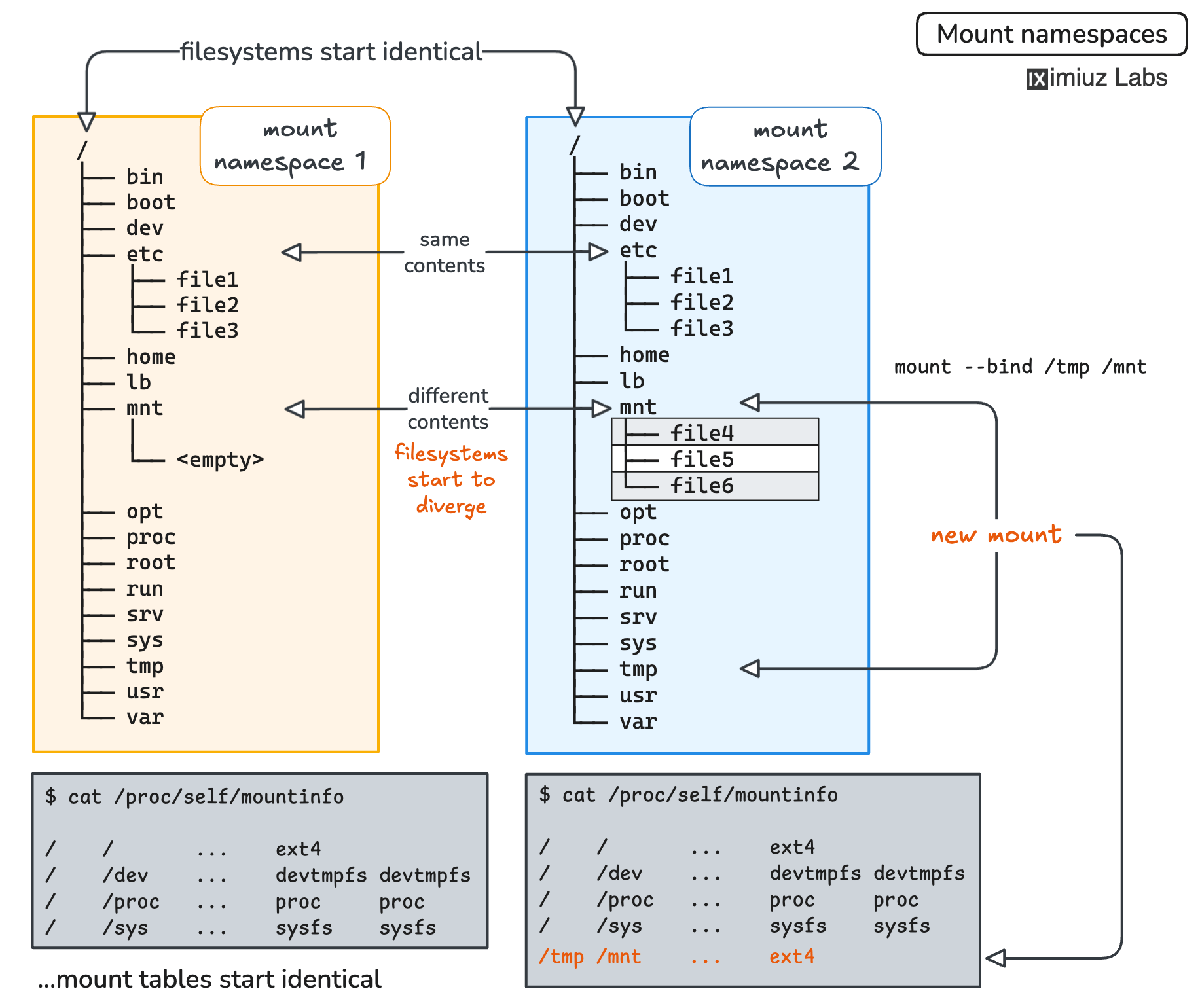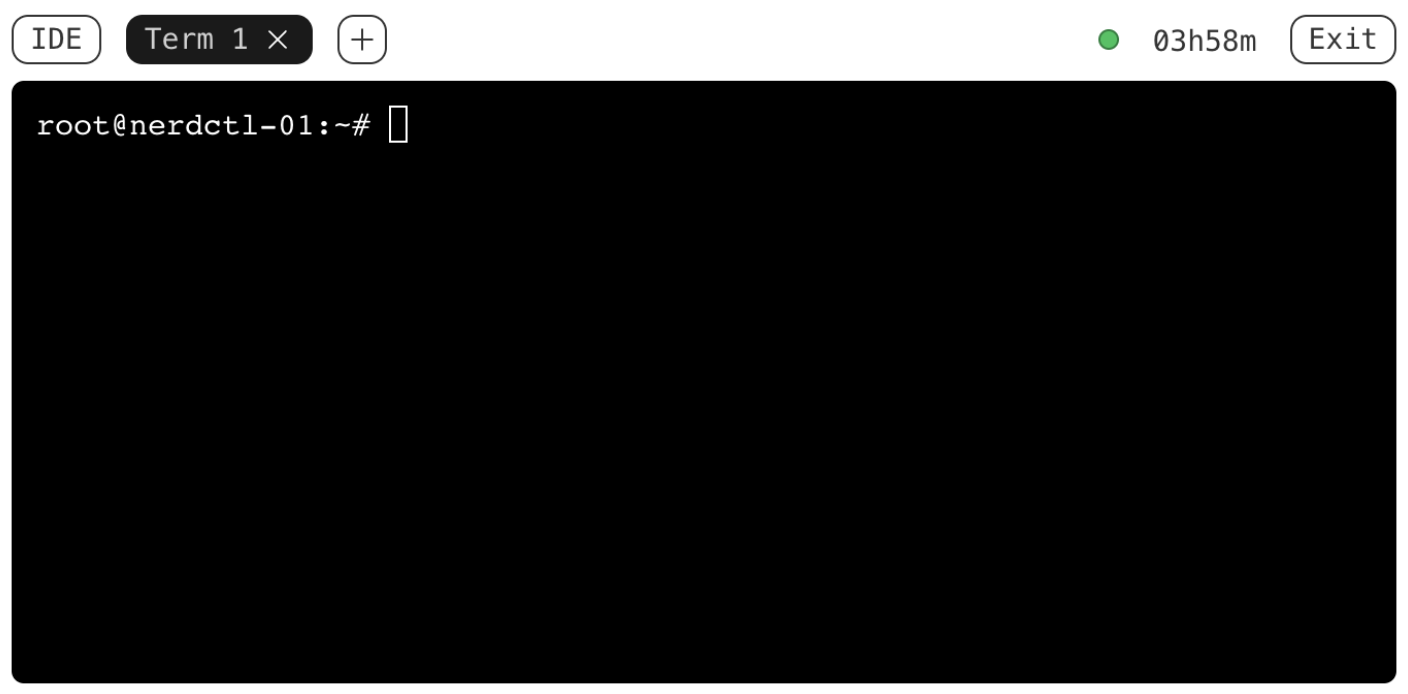How Container Filesystem Works: Building a Docker-like Container From Scratch
One of the superpowers of containers is their isolated filesystem view -
from inside a container it can look like a full Linux distro, often different from the host.
Run docker run nginx, and Nginx lands in its familiar Debian userspace no matter what Linux flavor your host runs.
But how is that illusion built?
In this post, we'll assemble a tiny but realistic, Docker-like container using only stock Linux tools: unshare, mount, and pivot_root.
No runtime magic and (almost) no cut corners.
Along the way, you'll see why the mount namespace is the bedrock of container isolation,
while other namespaces, such as PID, cgroup, UTS, and even network, play rather complementary roles.
By the end - especially if you pair this with the container networking tutorial - you'll be able to spin up fully featured, Docker-style containers using nothing but standard Linux commands. The ultimate goal of every aspiring container guru.
Prerequisites
- Some prior familiarity with Docker (or Podman, or the like) containers
- Basic Linux knowledge (shell scripting, general namespace awareness)
- Filesystem fundamentals (single directory hierarchy, mount table, bind mount, etc.)
Visualizing the end result
The diagram below shows what filesystem isolation looks like when Docker creates a new container. It's all right if the drawing feels overwhelming. With the help of the hands-on exercises in this tutorial, we'll build a comprehensive mental model of how containers work, so when we revisit the diagram in the closing section, it'll look much more digestible.

Click to enlarge
What exactly does Mount Namespace isolate?
Let's do a quick experiment. In Terminal 1, start a new shell session in its own mount namespace:
sudo unshare --mount bash
Now in Terminal 2, create a file somewhere on the host's filesystem:
echo "Hello from host's mount namespace" | sudo tee /opt/marker.txt
Surprisingly or not, when you try locating this file in the newly created mount namespace using the Terminal 1 tab, it'll be there:
cat /opt/marker.txt
So what exactly did we just isolate with unshare --mount? 🤔
The answer is - a mount table. Here is how to verify it. From Terminal 1, mount something:
sudo mount --bind /tmp /mnt
💡 The above command uses a bind mount for simplicity, but a regular mount (of a block device) would do, too.
Now if you list the contents of the /mnt folder in Terminal 1,
you should see the files of the /tmp folder:
ls -l /mnt
total 12
drwx------ 3 root root 4096 Sep 11 14:16 file1
drwx------ 3 root root 4096 Sep 11 14:16 file2
...
But at the same time, the /mnt folder remained empty in the host mount namespace.
If you run the same ls command from Terminal 2,
you'll see no files:
ls -lah /mnt
total 0
Finally, the filesystem "views" started diverging between namespaces. However, we could only achieve it by creating a new mount point.

Mount namespaces, visualized
From the mount namespace man page:
Mount namespaces provide isolation of the list of mounts seen by the processes in each namespace instance. Thus, the processes in each of the mount namespace instances will see distinct single directory hierarchies.
Compare the mount tables by running findmnt from Terminal 1 and Terminal 2:
TARGET SOURCE FSTYPE OPTIONS
/ /dev/vda ext4 rw,...
├─/dev devtmpfs devtmpfs rw,...
│ ├─/dev/shm tmpfs tmpfs rw,...
│ ├─/dev/pts devpts devpts rw,...
│ └─/dev/mqueue mqueue mqueue rw,...
├─/proc proc proc rw,...
├─/sys sysfs sysfs rw,...
│ ├─/sys/kernel/security securityfs securityfs rw,...
│ ├─/sys/fs/cgroup cgroup2 cgroup2 rw,...
│ ...
└─/run tmpfs tmpfs rw,...
├─/run/lock tmpfs tmpfs rw,...
└─/run/user/1001 tmpfs tmpfs rw,...
In hindsight, it should probably make sense - after all, we are playing with a mount namespace (and there is no such thing as filesystem namespaces, for better or worse).
💡 Interesting fact: Mount namespaces were the first namespace type added to Linux, appearing in Linux 2.4, ca. 2002.
💡 Pro Tip: You can quickly check the current mount namespace of a process using the following command:
readlink /proc/$PID/ns/mnt
Different inode numbers in the output will indicate different namespaces.
Try running readlink /proc/self/ns/mnt from Terminal 1 and Terminal 2.
What the heck is Mount Propagation?
Before we jump to how exactly mount namespaces are applied by Docker an OCI runtime
(e.g., runc) to create containers,
we need to learn about one more important (and related) concept - mount propagation.
⚠️ Make sure to exit the namespaced shell in Terminal 1 before proceeding with the commands in this section.
If you tried to re-do the experiment from the previous section using the unshare() system call instead of the unshare CLI command,
the results might look different.
package main
import "os"
import "os/exec"
import "syscall"
func main() {
if err := syscall.Unshare(syscall.CLONE_NEWNS); err != nil {
panic(err)
}
cmd := exec.Command("bash")
cmd.Stdin = os.Stdin
cmd.Stdout = os.Stdout
cmd.Stderr = os.Stderr
cmd.Env = os.Environ()
cmd.Run()
}
🧙♂️ You shall not pass!
This tutorial is only available at the premium tier. Please upgrade your account to unlock all learning materials, get unlimited daily usage, and access to more powerful playgrounds. Help us keep this platform alive and growing!
Level up your Server Side game — Join 20,000 engineers who receive insightful learning materials straight to their inbox
